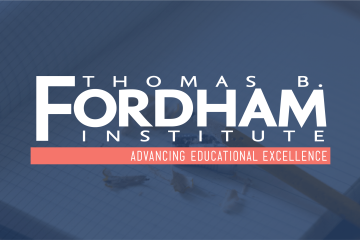This whopping new report from a special committee of the National Academies of Science, Engineering, and Medicine (NASEM) is a whopping disappointment.
Though the fifteen committee members are mostly quite accomplished in their fields, beginning with the able Adam Gamoran, president of the W.T. Grant Foundation, who chaired the group, it’s important to note that thirteen of them—all but Gamoran and Norma Ming, research supervisor for the San Francisco school system—work at major research universities. For all the heavy emphasis on “equity” in their report, not a single panelist came from an HBCU, a community college, a regional university, a religious institution, or the worlds of education policy and practice. Needless to say, none was chosen to represent parents, teachers, students—or even taxpayers. These are academic researchers, many with IES grants of their own, opining on the future of education research.
Yes, they proffer some worthy ideas for IES’s two research centers, such as supporting studies that make imaginative use of artificial intelligence and “big data.” But a slew of their recommendations are misguided and, if followed, would do more harm than good.
Particularly egregious examples include the following:
- Reducing the focus on student-level outcomes
- Adding “civil rights policy and practice” to the IES agenda (an important set of issues, to be sure, but not for this agency)
- Doing more “qualitative” research
- Publishing the “racial, ethnic, gender, disciplinary and institutional backgrounds” of everyone who applies, gets funded, serves on a review panel, or participates in a study sample
And then there are the blind spots and omissions. Nowhere in this fat volume does the panel suggest that IES do anything in such key realms as early-childhood education, private schools, homeschooling, civics education, community colleges, regional public universities, or adult education. Nor—despite their push for more different kinds of “outcomes”—do they ever mention such crucial postschool outcomes as employment, earnings, and citizenship.
As I understand it, what the twenty-year-old IES was seeking from NASEM in this review (as in two others, one focused on NAEP and the other on NCES), was constructive suggestions toward a blueprint or agenda for the next five years of federally supported education research—what topic areas should be added, which ones needed refreshing, perhaps which could be retired, plus advice regarding institutional accountability and transparency and so forth. Yet that’s mostly not what was delivered. Sorry, National Academies, but what we’re seeing in this tedious document looks more like an overweight specimen of veteran high-status education researchers washing each other’s hands while singing about equity.
SOURCE: Adam Gamoran and Kenne Dibner, eds., “The Future of Education Research at IES: Advancing an Equity-Oriented Science,” The National Academies of Sciences, Engineering, and Medicine (March 2022).




